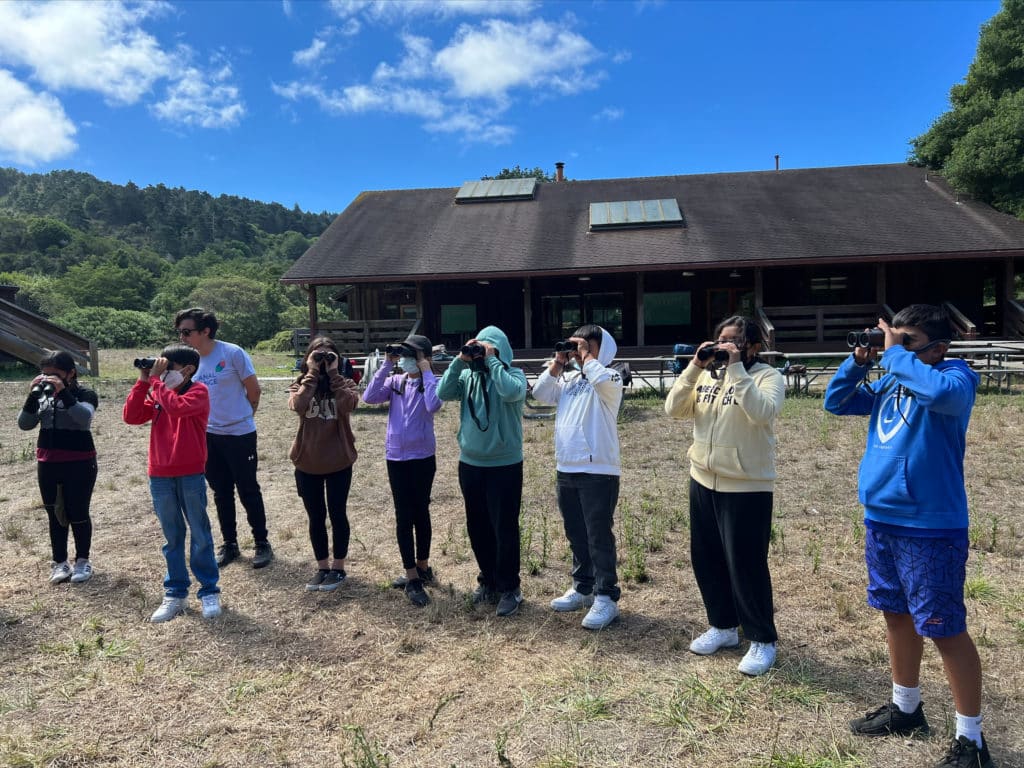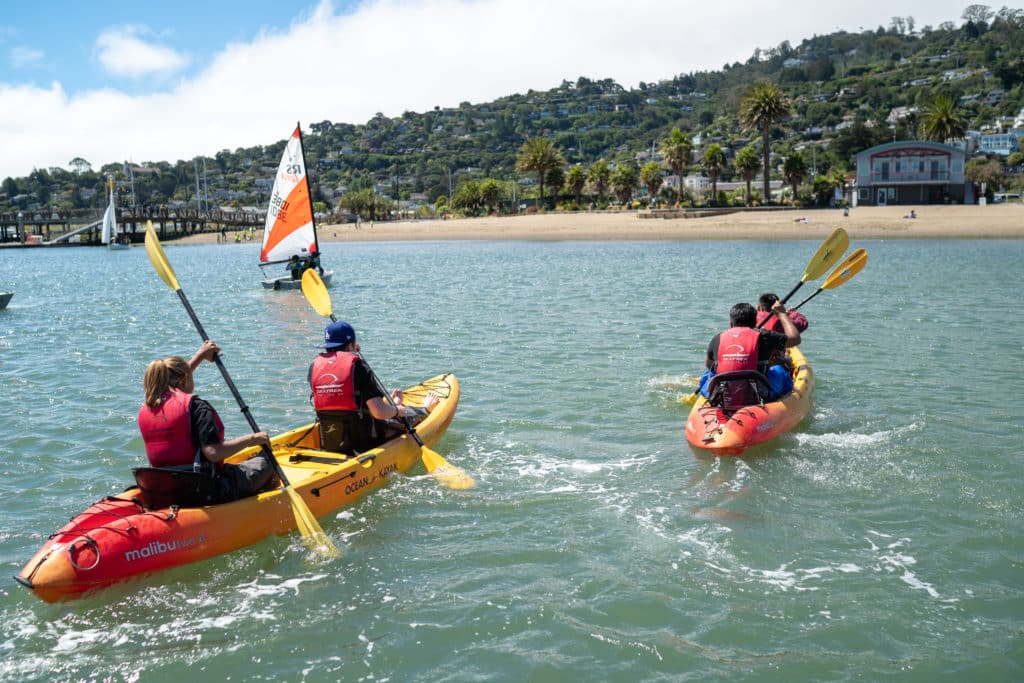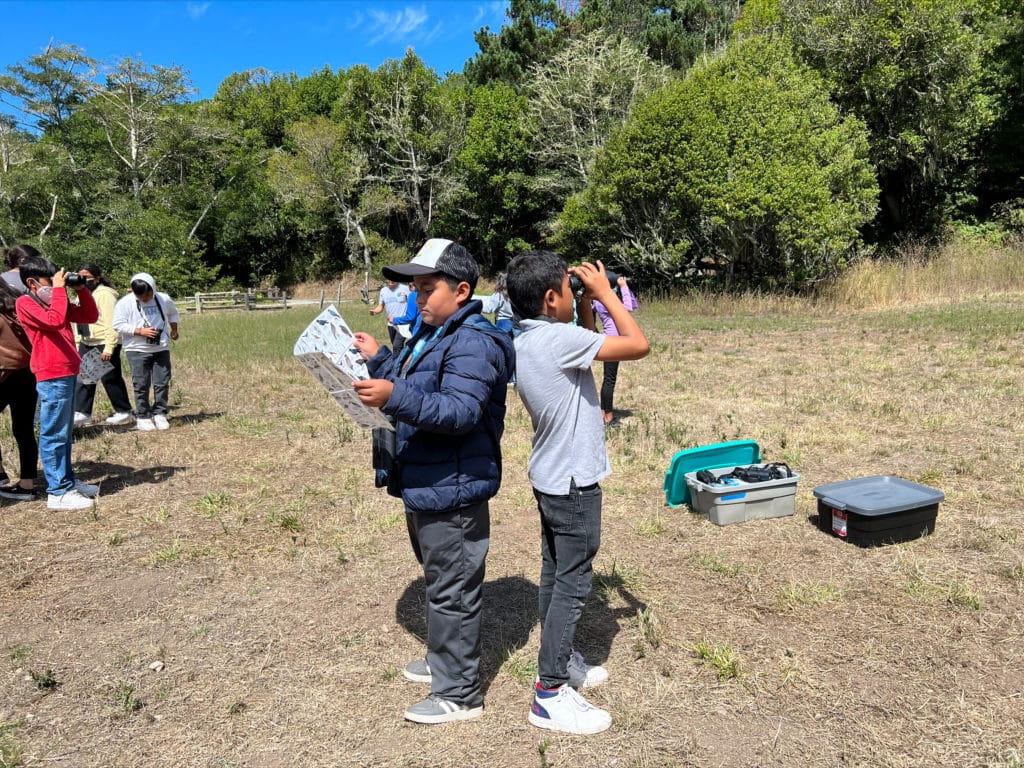Closing the ‘nature gap’ for Latino youth in Marin
August 31, 2022

Nature is all around us in Marin County. Just outside our doors are spectacular natural wonders, unrivaled in the Bay Area and beyond.
But access to the beauty and benefits of the outdoors is limited for many young people including first generation Latino students and newly arrived immigrant youth from the Canal neighborhood.
These youth face a variety of barriers, things like transportation and disposable income, that are common among communities of color. Nationally, low income and communities of color are three times more likely than white communities to live in areas that are ‘nature deprived’ according the Center for American Progress and the Hispanic Access Foundation.
Our work, alongside our committed public and private partners, centers on lifting the barriers that prevent Latino youth and their families from accessing the outdoors in Marin County.
Measurable outcomes: connecting youth to the outdoors
The benefits of connecting youth to the outdoors are well-documented: time in nature supports young peoples’ health and wellbeing and serves to counter pandemic-related stressors. Being outdoors is restorative and health-giving.
To close the so-called ‘nature gap’, our work focuses on expanding access for students in University Prep (UP!), our intensive after school academic enrichment program, and newly arrived immigrant youth who are part of Opportunity for Youth (OFY).
Our UP! team has measurable benchmarks for success, including a high field trip participation rate among students over multiple years in middle and high school. Notably, program leaders aim to have 75 percent of youth report that they see themselves as environmental stewards and 90 percent report that they feel comfortable in the outdoors.
Students participate in a variety of outdoor activities through the school year: hiking the trails of North Bay, camping overnight in Point Reyes, and exploring the beaches and waterways of the Bay.
Henry Velasquez, Youth Education Senior Manager, coordinates outdoor experiences for students. “We have seen a high interest in our younger students in our outdoor opportunities. This past year students learned about nature, wildlife, the reservoirs at Lagunitas Lake, and plant nurseries at the Marin Headlands. These experiences would not be possible without our partnerships.”
Youth who are part of OFY, our second program serving young people, are also connecting to the outdoors through a series of field trips, such as kayaking on Bay. They also participate in a recreational soccer team. Each of the activities is designed to connect youth to the outdoors and build connection with their new community.

Advocating for equitable neighborhood parks
Young people deserve access to the trails, beaches, and waterways of Marin County — and neighborhood parks and recreational facilities. These are the places that youth can visit independently and on a daily basis.
Important progress is being made: Pickleweed Park, the only major facility for outdoor recreation serving 12,000 Canal neighborhood residents, and at capacity for years, is slated for a long overdue upgrade thanks to a federal grant to the City of San Rafael.
Aaron Burnett, Director of Policy and Civic Engagement, sees the project as a major boon to the physical and mental health of Canal residents. “We believe every family and child in Marin deserves equitable access to quality outdoor recreation,” Burnett stated to the Marin Independent Journal on June 24, 2022.
In the neighborhood and around Marin County, our work to connect youth the outdoors is supported by our committed partners, experts in the field. Youth learn from outdoor educators and naturalists, through partnerships with One Tam, National Park Service, Latinos Outdoors, Sea Trek and others. We are grateful to all our partners and to everyone who shares our commitment to equitable access to the outdoors for all youth in Marin.
National statistics
- Latinos are 165% more likely to live in counties with unhealthy levels of particulate matter pollution according to League of Latin American Citizens
- Latinos disproportionately rely on public transit, with less access to a car, making access to natural areas more challenging.
- Socioeconomic barriers limit access to the outdoors: lack of time for low-income residents who work multiple jobs and struggle to get time off; lack of money for appropriate clothing and gear for recreational activities along with the lack of transportation.
